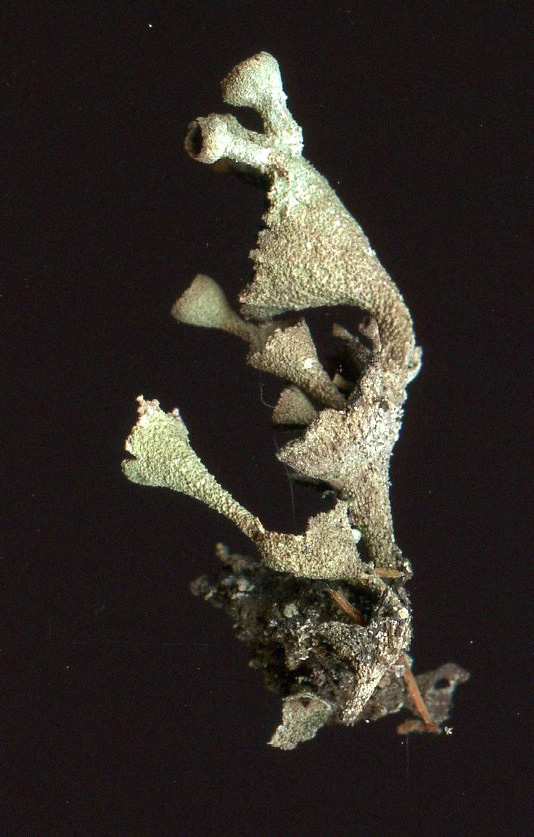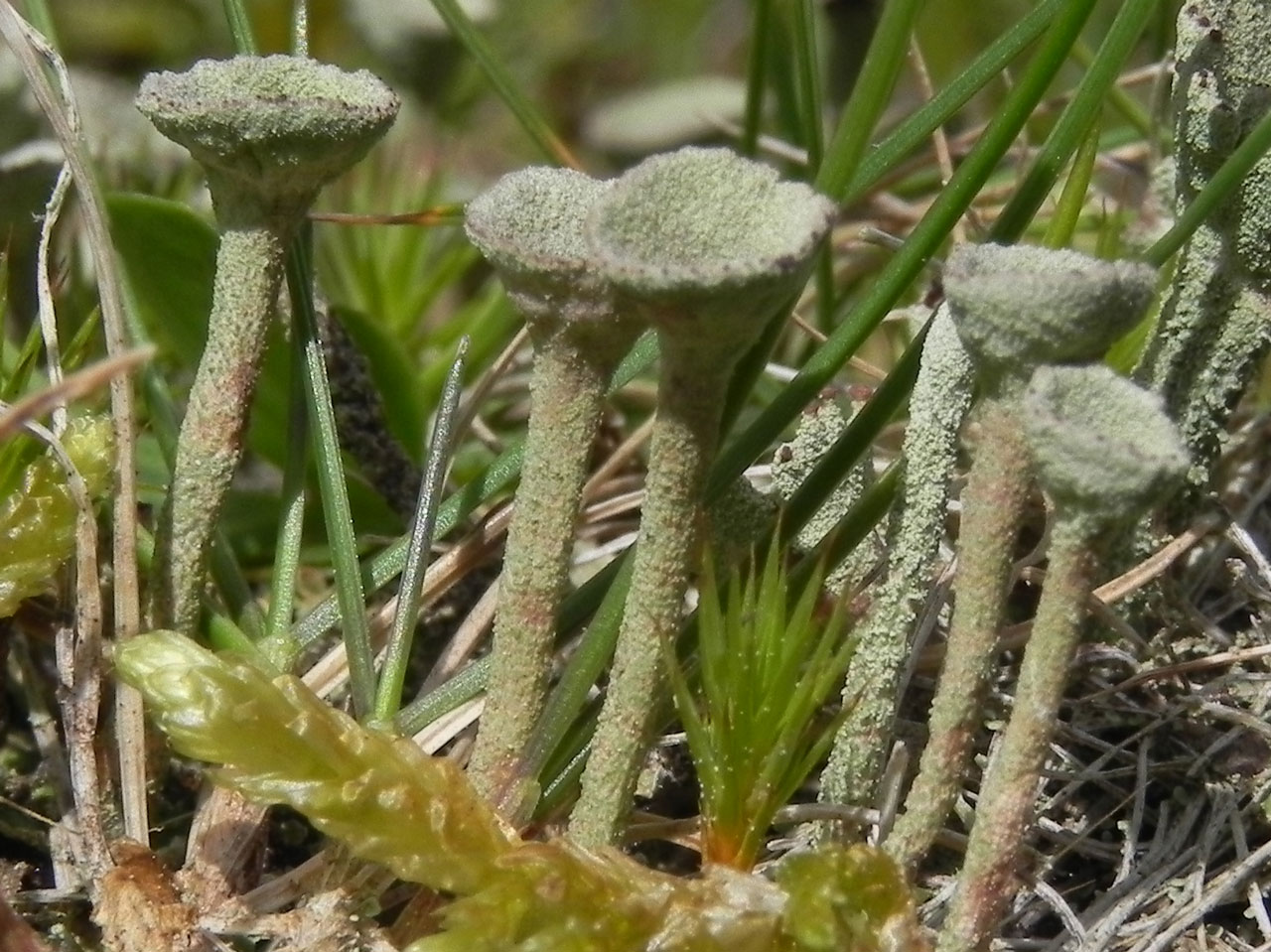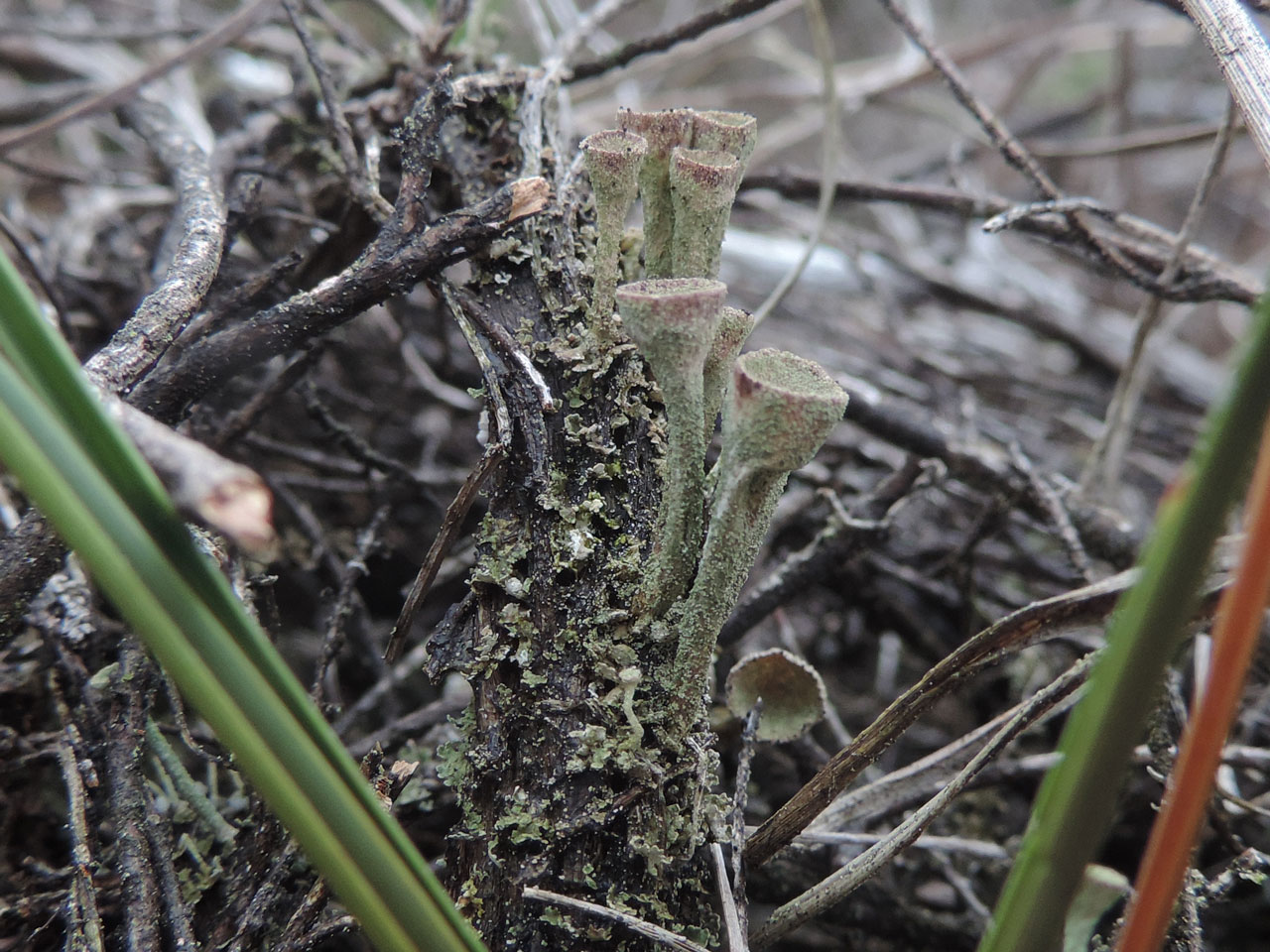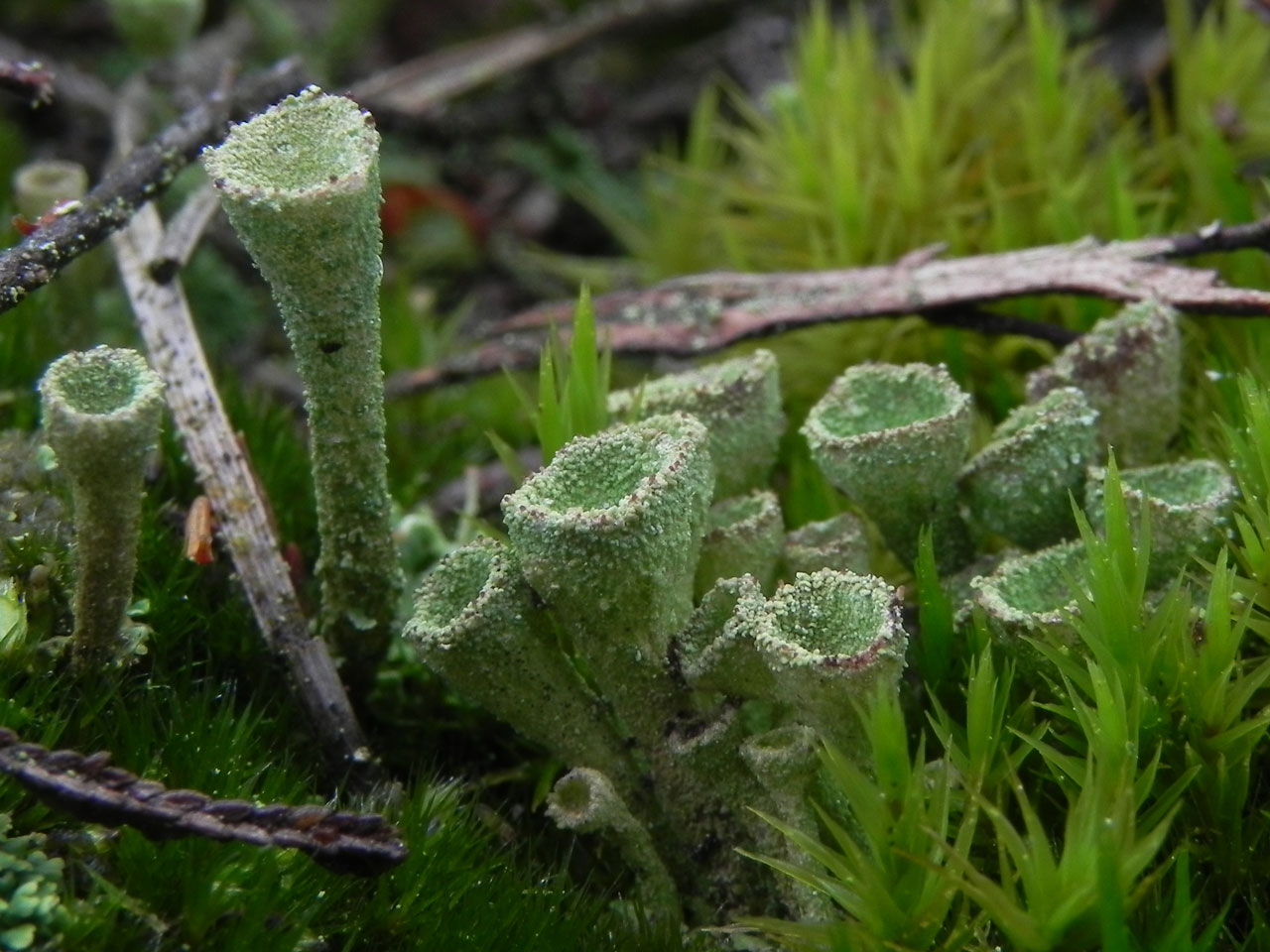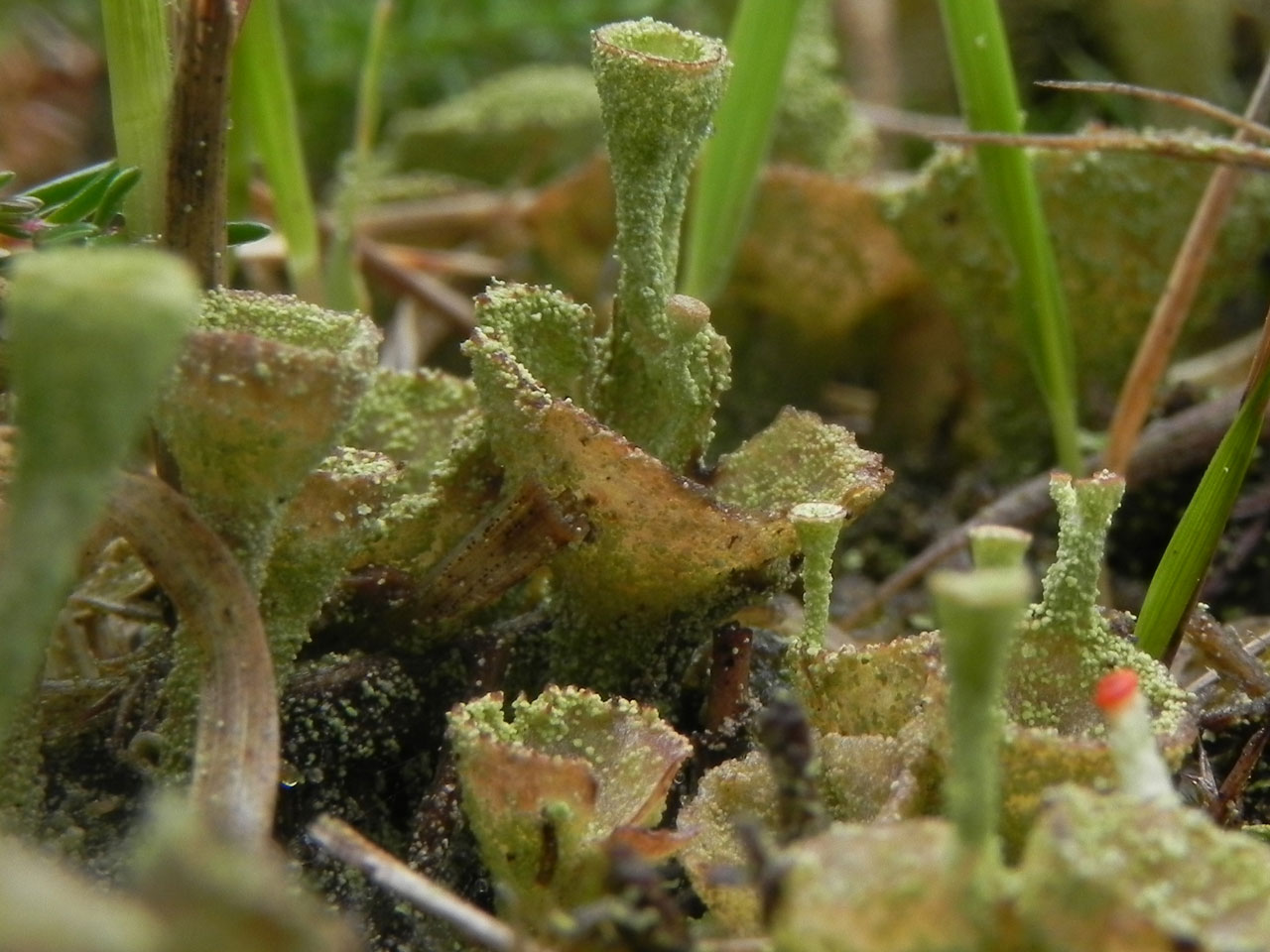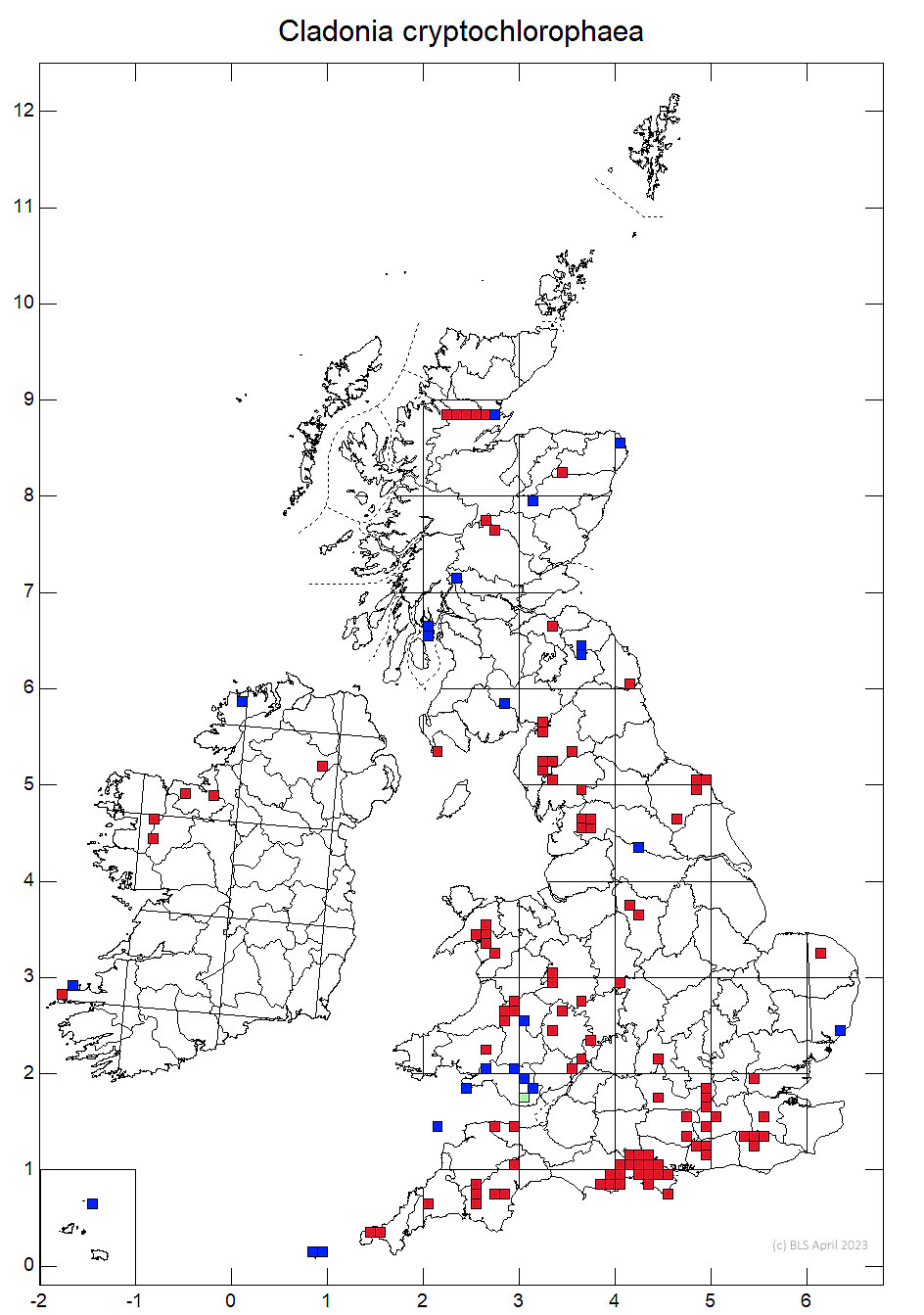A Pixie Cup within the difficult Cladonia grayi group, and included in the Cladonia chlorophaea s. lat. morphocomplex. The Cladonia grayi group can be distinguished from Cladonia chlorophaea s. str. by the browner colours, the exposed medulla pinkish brown and the presence of K and C reactions and UV fluorescence. Cladonia cryptochlorophaea can be greener than other members of the Cladonia grayi group, but the fleeting KC+ wine red reaction is more distinctive and separates this taxa from all but Cladonia merochlorophaea. The latter is also C+ red and is more coarsely granular. Well developed examples are reasonably distinctive, the finely granular podetia stem with a dotted look is especially typical, but a lot of Cladonia grayi group specimens are not field identifiable. Cladonia cryptochlorophaea appears to be the most frequent Pixie Cup with brown apothecia and is typically found on acid humus, peat, bark and wood.
A member of the Cladonia chlorophaea/grayi morphocomplex. Podetia greyish green with smaller, ± farinose rather than granulose soredia, the exposed medulla pinkish brown and a quite distinct chemistry. Thallus C± yellow, K+ yellow-red or brownish, KC+ wine red (fleeting), Pd+ orange-red, UV+ pale yellowish (cryptochlorophaeic and fumarprotocetraric acids)
The spot reactions for this species are described differently in the literature; James (2009) gives C± yellow and K+ yellow-red (presumably yellow→red). Ahti & Stenroos (2013) and Burgaz et al. (2020) give C+ fugitively wine-red (or C+ yellow orange) and K+ wine red, though they note that the K reaction is not always reliable; it may also appear brownish. This may indicate chemical variation, or in part differences of nomenclature. It is difficult to distinguish from other members of the C. grayi complex without TLC.
On humus-rich soil in heaths, moorlands and open woodlands, and on acid lignum and bark; rarely on soil over siliceous rock.

Throughout Britain and Ireland; it appears to be the commonest member of the C. grayi group.
Ahti, T. & Stenroos, S. (2013). Cladoniaceae. In: Ahti, T., Stenroos, S., & Moberg, R. (eds), Nordic Lichen Flora 5: 1–117.
Burgaz, A.R., Ahti, T. & Pino-Bodas, R. (2020) Mediterranean Cladoniaceae. Madrid: Spanish Lichen Society.
James, P.W. (2009). Cladonia. In: Lichens of Great Britain and Ireland (Smith, C.W., Aptroot, A., Coppins, B.J., Fletcher, A., Gilbert, O.L., James, P.W. & Wolselsey, P.A. eds): 309–338. London: British Lichen Society.
Pino-Bodas, R., Sanderson, N., Cannon, P., Aptroot, A., Coppins, B., Orange, A. & Simkin, J. (2021). Lecanorales: Cladoniaceae, including the genera Cladonia, Pilophorus and Pycnothelia. Revisions of British and Irish Lichens 19: 1-45. Link
Text by N A Sanderson, based Pino-Bodas et al (2021)
